IKEA Interior Design Manager – April, answers some common design questions to help you get inspired and organised in your bedroom and study space.
“How do I make a small room look bigger?”
-Zoe from Hong Kong, studying now at RMIT University.
Take a look at your furniture, large pieces like an oversized sofa or bulky bed-head will make your small space look even smaller! Furniture that is low to the ground gives the impression of more wall space, whilst furniture pieces that have hidden storage or are multi-functional can help reduce the amount of furniture in the room altogether.
If your furniture is not the problem, then assess the colour scheme in your room. Dark and moody colours tend to close the space in as they absorb light, so opt for a more light and airy colour palette when choosing wall decoration, furniture, and textiles. If all else fails, invest in a large mirror to give the illusion of more space!
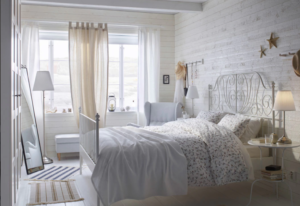
“My room has very little natural light, how do I make my space appear brighter and happier?”
– Linnie from Singapore, studying now at University of Melbourne.
The best thing about light is that we can ‘create’ it. Use bright globes for lamps, but be careful to not go above the maximum wattage. A white light creates a crisper, brighter glow, whereas a yellow light is more warm and soft – better suited to ambient lighting. Furniture with a gloss finish or reflective surface will bounce the light around the room to make it seem brighter, and be sure to use sheer curtains on windows for privacy that doesn’t completely block out the available natural light.
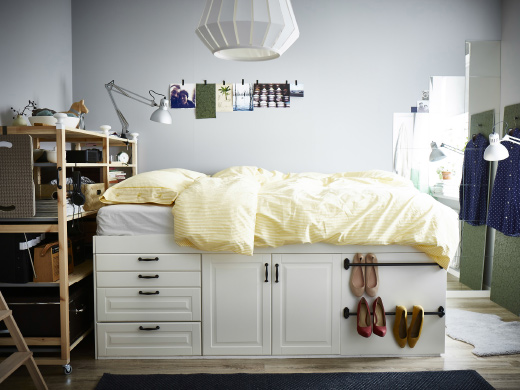
“What kind of layout for a study space will be the most comfortable for long work sessions?”
– Laura from Australia, studying at RMIT University.
Your study space needs are dependent on how you study and what sort of work you’re doing. If you’re studying a creative subject then you may need a deeper desk for making mood boards and models and lots of organised storage for all your inspiration and tools.
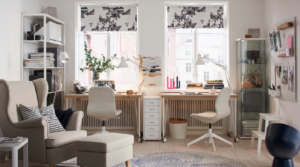
If your study involves mainly sitting at a laptop, then a conventional desk may not be necessary at all. Laptop support is great for those long hours on the couch staring at a computer screen and trolleys are perfect for wheeling books, tech gear and stationary out from your room to your study space – wherever that may be!
However you work, it’s important to make sure you have plenty of light to avoid eye strain. Take regular breaks and sit in a supportive chair to avoid any back pain when working for long periods of time.
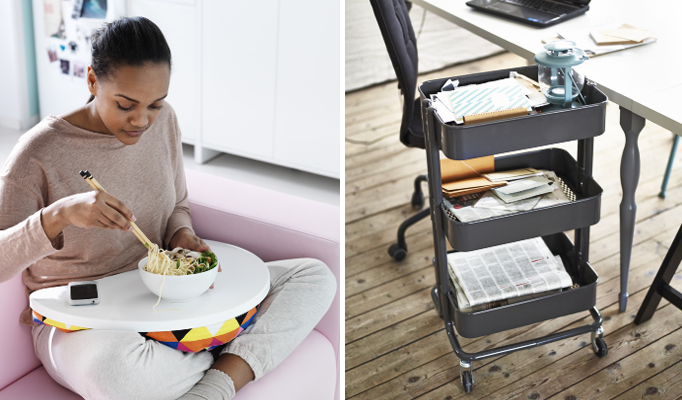
“What are some cheap ways to organise and declutter? And what do I do with all my cables?”
– Diane, UTS Alumni, Singapore
There are many inexpensive and easy ways to organise and declutter your home. A great place to start is with the wardrobe when there’s a change of season. In winter, chances are we’ll be wearing a lot more coats and jeans and not many pairs of shorts! Organise any out of season clothing into storage containers, these can be stored under the bed or at the top of a wardrobe and keep clothes protected from moths and dust while they’re not being worn.
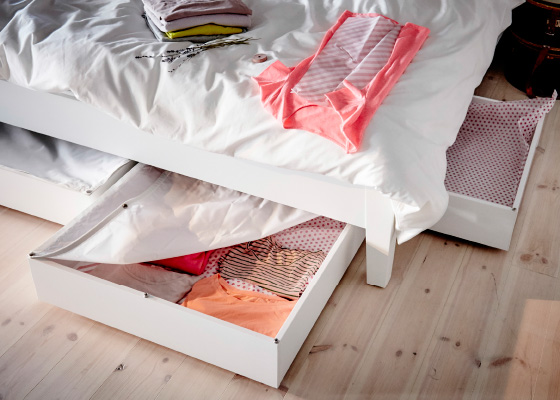
Often our study areas end up lots of unnecessary clutter, and it can be hard to tell what’s important and what’s not! With handy labels on the front you can easily organise all your semesters’ papers, notes and books into magazine files and storage boxes. Think about different colours and sizes to arrange your stuff into an efficient storage solution.
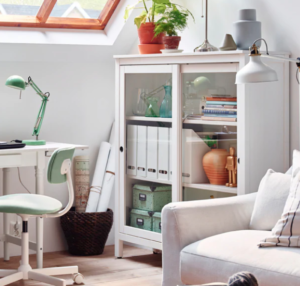
‘Cable trunking’ holders can be screwed in under a desk to group computer and electrical cables together and cable management boxes hide away bulky adapters and lengthy cables. Some cable management sets also provide stick-on cable holders to keep them off the floor without damaging walls!
TOP TIP! You can create calm and hide your clutter by attaching roller blinds or curtains to your storage shelves.
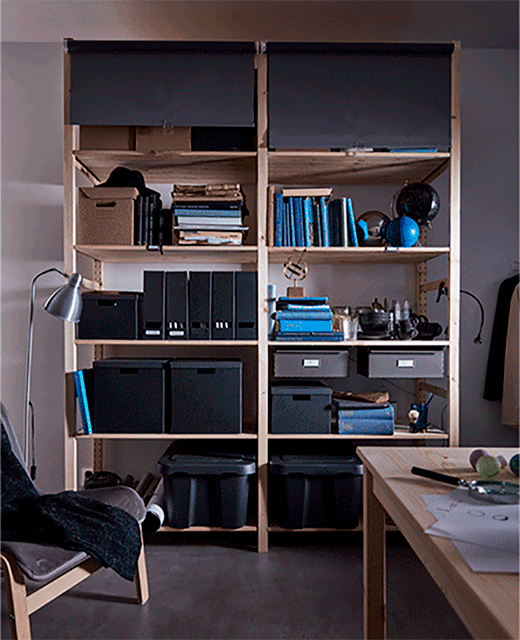
Quality furniture at affordable prices. Find everything from smart storage solutions, mattresses, textiles, wardrobes to kitchens & more. Be inspired!






